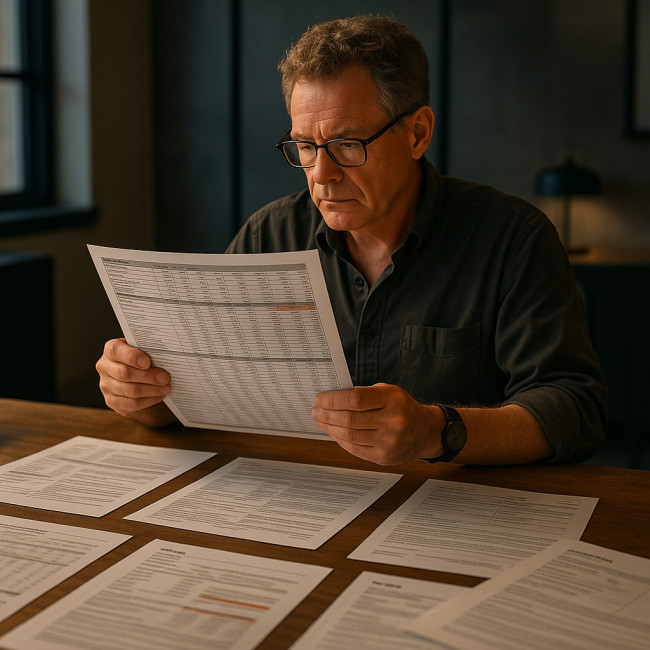Budgeting multi-location portrait shoots: hidden cost checkpoints for producers
Multi-location portrait shoots promise fresh backdrops and narrative depth, yet they regularly overrun budgets by 15-40 %. This guide walks you through every hidden checkpoint—permits, crew travel, contingency buffers and more—so you can quote confidently and still delight clients.
Why costs snowball when you add locations
Each extra stop multiplies—not adds—line-items. Crew per diems, freight, local fixers and insurance restart in every city. When not tracked, these “mini-resets” silently erode profit.
Travel and accommodation multipliers
- Checked-in gear fees: airlines charge up to €150 per case, per leg.
- Last-mile transport: oversized vehicles or couriers for lighting kits.
- Variable hotel tax: 6–14 % depending on jurisdiction.
Permits and location fees
Public parks can cost €50 or €5 000 depending on the municipality. Some cities like Paris add a heritage surcharge on historical sites. Always verify during scouting.
Six hidden cost checkpoints savvy producers flag early
- Scout day holds – Many scouts charge a full day even if the client cancels. Add a 10 % buffer.
- Local crew overtime minimums – Unions often round up to the next hour after ten minutes.
- Insurance rider extensions – Separate certificates for drones, boats or rooftop access.
- Data management on the road – Daily LTO backups or cloud uploads consume time and rental drives.
- Equipment carnets – ATA carnets start at €350 and rise with declared value.
- Bank fees on multi-currency payouts – International transfers can add 2–3 % to crew invoices.
Cost comparison: single vs. three-city portrait project
| Line-item | One location | Three locations | Increase |
|---|---|---|---|
| Location fees & permits | €1 200 | €3 900 | +225 % |
| Travel & accommodation | €2 100 | €6 800 | +224 % |
| Equipment freight & carnets | €800 | €2 400 | +200 % |
| Local crew & fixers | €2 000 | €5 500 | +175 % |
| Insurance & contingency | €600 | €1 500 | +150 % |
Figures based on 2023 AICP commercial production averages across EU & US markets.
Budget-stretching tactics producers swear by
Bundle talent travel
Instead of flying the photographer back home between legs, negotiate a continuous shoot rate. Many portrait specialists listed in the portrait photographers directory accept a reduced daily fee when travel days are paid.
Hire local assistants, not full crews
Use a lean travelling core team and source assistants on site. For guidance on delegating safely, skim our article fair pay checklist for photography assistants.
Remote approvals save reshoot cash
Set up tethered streaming so clients sign off shots in real time. Learn the workflow in remote-directed portrait shoots.
Pre-visualise styling
Mood boards reduce wardrobe overages. See five tested board formats in portrait mood-board playbook.
Opt for eco-smart sets
Re-using modular backdrops cuts freight weight by up to 30 %. More green tips in eco-friendly photo production.
Contingency buffers: how much is enough?

Industry benchmarks suggest 12–15 % of the total budget, yet that figure often underestimates real-world turbulence. Think of this buffer as a living shield able to absorb flight cancellations, prop damage, sudden overtime rulings by local unions, hotel price spikes during trade-show weeks, hard-to-predict customs delays on rented lenses, or even currency swings when an international payment clears late. Build your contingency line with the same granularity you devote to lighting or talent: list likely disruptions, assign probability-weighted costs to each, then share that logic inside your quote so every stakeholder understands the math and trusts the number.
Three trigger points to release contingency
- Weather delay beyond four hours
- Lost or delayed baggage exceeding two key pieces
- Local permit denial requiring plan-B venue
Legal and insurance essentials across borders
Verify that your general liability extends internationally and that models sign country-specific releases. If minors appear, local labour laws may demand on-set tutors.
Checklist: timeline planning for frictionless cash flow
- Lock creative concept T-6 weeks.
- Scout and permit applications T-5 weeks.
- Book core crew & hold dates T-4 weeks.
- Confirm local assistants T-3 weeks.
- Purchase travel & carnets T-2 weeks.
- Final call sheet & contingency review T-3 days.
Quiz – Test your cost-checkpoint reflexes
FAQ
- How early should I apply for multi-city permits?
- Start at least five weeks out. Some councils only meet monthly, and fast-track fees can triple the cost.
- Is it cheaper to rent gear locally?
- Often yes for high-value items like medium-format bodies. Factor in compatibility tests and insurance top-ups.
- Can I avoid ATA carnets?
- If all locations lie within the EU Schengen zone, carnets are unnecessary. Otherwise budget €350–€600.
- Do I need separate insurance for drones?
- Yes. Most general liability policies exclude aerial work. Add an aviation rider for each country.
- What's the best way to pay international crew?
- Use multi-currency platforms to dodge 2–3 % bank spreads. Agree on who absorbs fees in the contract.
Wrap-up & next step
With these checkpoints mapped, you're ready to build bulletproof quotes that protect margins and impress clients. Need a seasoned portrait team? Browse vetted talent and start shortlisting today.
Ready to lock your next shoot? Contact us and receive a free budget template tailored to your project scope.











